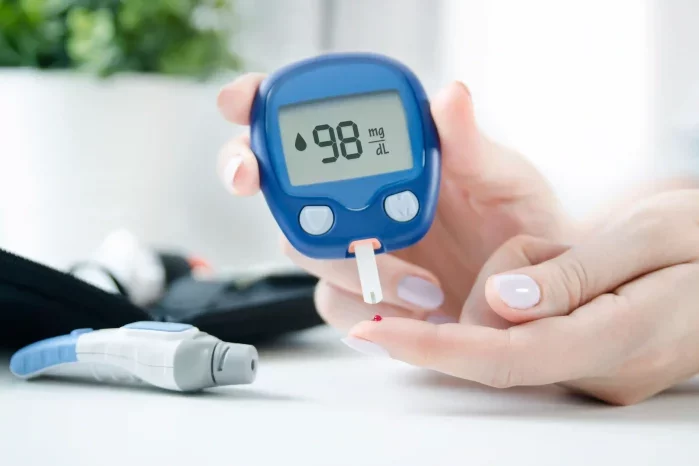Understanding Gestational Diabetes and Its Impact
Gestational diabetes mellitus (GDM) is a condition characterized by glucose intolerance that is first recognized during pregnancy. This condition poses significant risks for both the mother and the developing fetus, including increased chances of hypertensive disorders, macrosomia, and cesarean delivery, as well as long-term risks like type 2 diabetes for both mother and child. Proper management of GDM is crucial to mitigate these risks and ensure a healthy pregnancy outcome. This article delves into comprehensive strategies to manage gestational diabetes effectively.
Early Screening and Diagnosis
The foundation of managing gestational diabetes begins with early screening and diagnosis. According to the American Diabetes Association (ADA), all pregnant women should be screened for GDM between 24 and 28 weeks of gestation using the oral glucose tolerance test (OGTT). However, women with high-risk factors, such as obesity, previous GDM, or a family history of diabetes, may benefit from earlier screening.
Early detection through OGTT allows for timely intervention. The two-step approach involves an initial glucose challenge test, followed by a diagnostic OGTT if the first test is positive. Accurate diagnosis is essential for initiating management plans tailored to the needs of the individual.
Nutritional Management
Dietary intervention is the cornerstone of GDM management. Medical nutrition therapy (MNT) aims to maintain normoglycemia, provide adequate nutrition for the mother and fetus, and prevent excessive weight gain. Here are key dietary strategies:
- Balanced Macronutrient Intake: A balanced intake of carbohydrates, proteins, and fats is crucial. Carbohydrates should make up about 45-50% of total caloric intake, with an emphasis on complex carbohydrates with a low glycemic index. Protein should constitute 20-25%, and fats around 25-30%.
- Frequent Small Meals: Instead of three large meals, consuming three small meals with 2-3 snacks can help in maintaining stable blood sugar levels.
- Glycemic Index Awareness: Choosing foods with a low glycemic index helps in preventing spikes in blood glucose levels. Foods such as whole grains, legumes, vegetables, and fruits are preferable.
- Portion Control: Monitoring portion sizes is essential to avoid excessive calorie intake, which can lead to weight gain and increased insulin resistance.
- Nutritional Counseling: Regular sessions with a registered dietitian can provide personalized dietary plans and adjustments based on the patient’s blood glucose monitoring results and lifestyle.
Physical Activity
Exercise is an effective way to improve insulin sensitivity and control blood glucose levels in GDM. The ADA recommends at least 30 minutes of moderate-intensity exercise most days of the week. Suitable activities include walking, swimming, and prenatal yoga. Here are some guidelines:
- Consistency: Regular physical activity, rather than sporadic exercise, is important for maintaining blood glucose control.
- Intensity: Moderate intensity is ideal, where the pregnant woman can talk but not sing during the activity.
- Safety Considerations: Exercise routines should be safe for pregnancy, avoiding activities that pose a risk of falling or abdominal trauma. Consultation with a healthcare provider is essential before starting any new exercise regimen.
Blood Glucose Monitoring
Self-monitoring of blood glucose (SMBG) is a critical component of GDM management. It helps in assessing the effectiveness of dietary and physical activity interventions and in making necessary adjustments. Recommendations for SMBG include:
- Frequency: Monitoring blood glucose levels four times a day—fasting and postprandial (1-2 hours after meals)—is commonly advised.
- Target Levels: The ADA suggests maintaining fasting blood glucose below 95 mg/dL, 1-hour postprandial levels below 140 mg/dL, and 2-hour postprandial levels below 120 mg/dL.
- Record Keeping: Keeping a detailed log of blood glucose readings, dietary intake, and physical activity helps in identifying patterns and making informed adjustments to the management plan.
Pharmacological Treatment
When lifestyle modifications are insufficient to achieve glycemic control, pharmacological intervention may be necessary. The primary options include insulin therapy and oral antidiabetic agents.
- Insulin Therapy: Insulin is the gold standard for managing GDM when medication is required. It does not cross the placenta, making it safe for the fetus. Various insulin regimens can be tailored to the individual’s needs, including short-acting and long-acting insulin.
- Oral Hypoglycemic Agents: Metformin and glyburide are commonly used oral medications. While metformin crosses the placenta, studies have not shown significant adverse effects on fetal outcomes. Glyburide, on the other hand, has a higher risk of neonatal hypoglycemia and is less preferred.
- Dosage and Adjustment: Regular follow-up with a healthcare provider is essential for dose adjustment based on SMBG results and changing insulin resistance levels during pregnancy.
Education and Support
Education is fundamental in empowering women with GDM to manage their condition effectively. Comprehensive education should cover:
- Understanding GDM: Explaining the pathophysiology, risks, and importance of management.
- Lifestyle Changes: Detailed guidance on diet, exercise, and SMBG.
- Medication Use: Instructions on insulin administration or oral medication usage, side effects, and dose adjustments.
- Psychological Support: Addressing the emotional and psychological impact of GDM, providing support through counseling or support groups.
Monitoring and Follow-Up
Regular monitoring and follow-up visits are crucial in managing GDM. These visits should focus on:
- Glycemic Control: Reviewing SMBG logs, adjusting dietary plans, physical activity, and medications as needed.
- Weight Gain: Monitoring weight gain to ensure it is within recommended guidelines.
- Fetal Health: Regular fetal monitoring through ultrasounds and non-stress tests to assess growth and well-being.
- Maternal Health: Monitoring for complications such as hypertensive disorders or preeclampsia.
Postpartum Management
Management of GDM does not end with delivery. Postpartum care includes:
- Blood Glucose Monitoring: Monitoring blood glucose levels postpartum to assess the resolution of GDM.
- Lifestyle Continuation: Encouraging the continuation of healthy eating and physical activity habits to reduce the risk of type 2 diabetes.
- Breastfeeding: Promoting breastfeeding, which has been shown to improve glucose metabolism and aid in weight loss.
- Long-Term Follow-Up: Scheduling a postpartum OGTT at 6-12 weeks to screen for persistent diabetes or impaired glucose tolerance. Long-term follow-up for diabetes risk assessment is also necessary.
Innovative Approaches and Research
Advancements in technology and ongoing research continue to improve the management of GDM. Emerging approaches include:
- Telemedicine: Utilizing telemedicine for remote monitoring and consultations, providing greater access to care and convenience.
- Continuous Glucose Monitoring (CGM): CGM systems offer real-time glucose monitoring, helping in better glycemic control and timely adjustments.
- Nutrigenomics: Studying the interaction between nutrition and genetics to develop personalized dietary recommendations.
- Pharmacogenomics: Exploring how genetic differences affect individual responses to medications, potentially leading to more tailored pharmacological treatments.
Conclusion
Gestational diabetes is a manageable condition with proper intervention and care. Early screening, individualized dietary plans, regular physical activity, SMBG, pharmacological treatment when necessary, education, and continuous support form the backbone of effective management. With advancements in technology and ongoing research, the future holds promise for even more precise and personalized approaches to managing GDM. Ensuring a comprehensive and proactive management strategy can significantly improve health outcomes for both mother and child, paving the way for a healthier future.
Related topics:
Normal Glucose Levels for Pregnancy


























